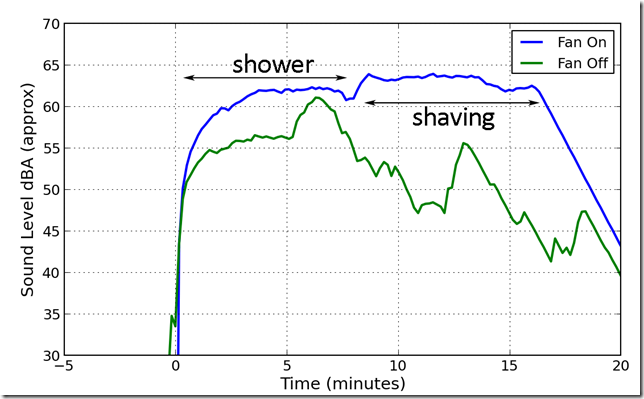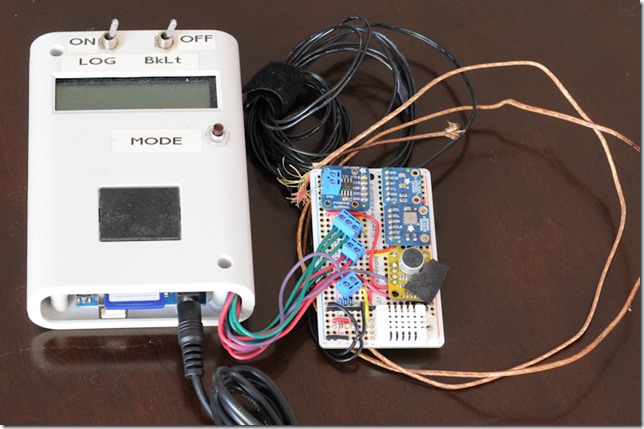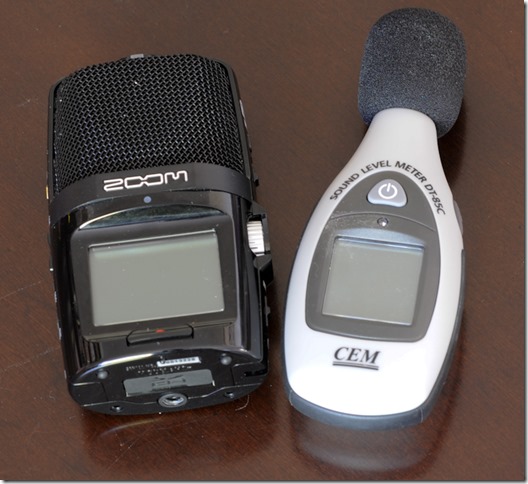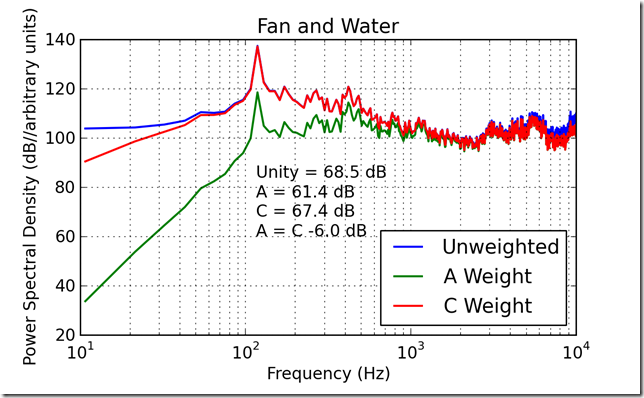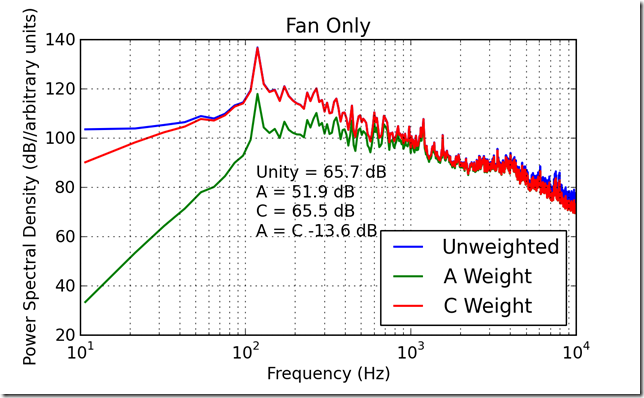I am working with the freetronics microphone module, which is described as having a sensitivity of “-40 dB typical”—let us assume it is dB (SPL) referenced to 20 micropascals root mean square (rms) at 1 KHz. When I think of an electronic element’s sensitivity, though, I’m thinking volts per micropascal and this is not provided.
The microphone’s schematic suggests the SPL measurement is the rms average over 3 milliseconds, and that the signal is proportional to rms pressure level. This suggests a log scale for display (a change from previous work).
The upshot is that the fan generates about 62 dBA; but to get that conclusion, I had to perform a spectral correction to match measurements from a more calibrated sensor.
Remember that I made the measurements with the RIMU data logger I built. That data logger has a digital low-pass filter on the microphone SPL. The low-pass filter has much too slow a response, but the basic result is OK. The RIMU, shown in the next picture, is the instrument.
I borrowed an SPL meter from my father (thanks!). It is, unfortunately, a C-weighted measurement, measuring in dBC. The C-weighting is occasionally a very useful measurement of sound level. Most measurements are done A-weighted, which is similar to human hearing. My challenge is to convert a measurement made with an unweighted microphone in arbitrary units to A-weighted measurement in dBA. The answer is to take a measurement with the instrument in dBC, and record the sound a with a sound recorder, figure out what converts C-weighting to A-weighting for this signal.
In the spectra below you can see that the spectrum recorded without weighting, by the Zoom recorder. I then applied an A weighting and a C weighting. What’s important is the conversion between the rms value for A and the rms value for C, which is a 6 dB correction in one case, and a 13 dB correction in the other.
So, to rehash the steps
- Record a sound level with the RIMU
- Measure a reference condition in dBC with the SPL
- Record a 15 second period with the Zoom
- Apply the A weighting to the Zoom record
- Apply the C weighting to the Zoom record
- Find the difference in dB between the A and C weighted records
- Assume the dBC weighting corresponds to the measurement made with the RIMU, and adjust the RIMU values so that they match the C-weighted measurement from the SPL
- Apply the C-to-A correction to the RIMU measurement.
Pretty epic pain, but at least I have the measurements. In the future I will recode the RIMU to take short A-weighted and C-weighted snapshots, and then calibrate the RIMU on the dBA record. Look for a follow-up post far in the future.

